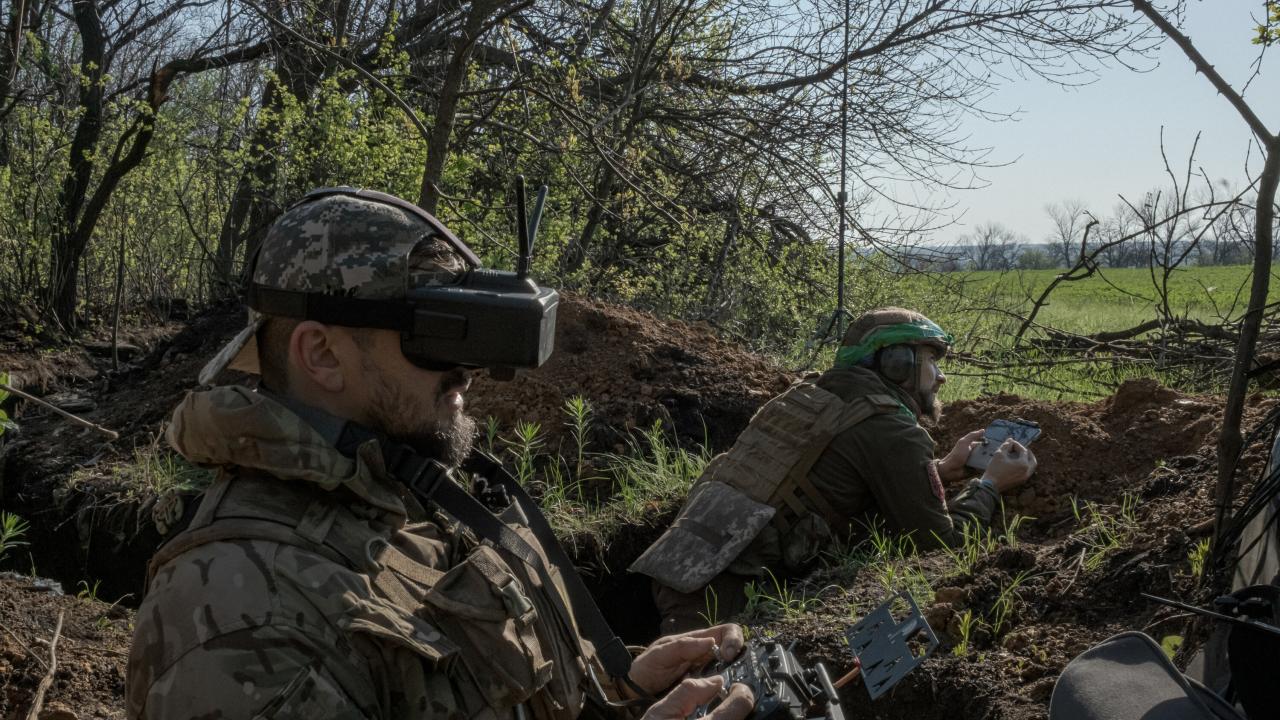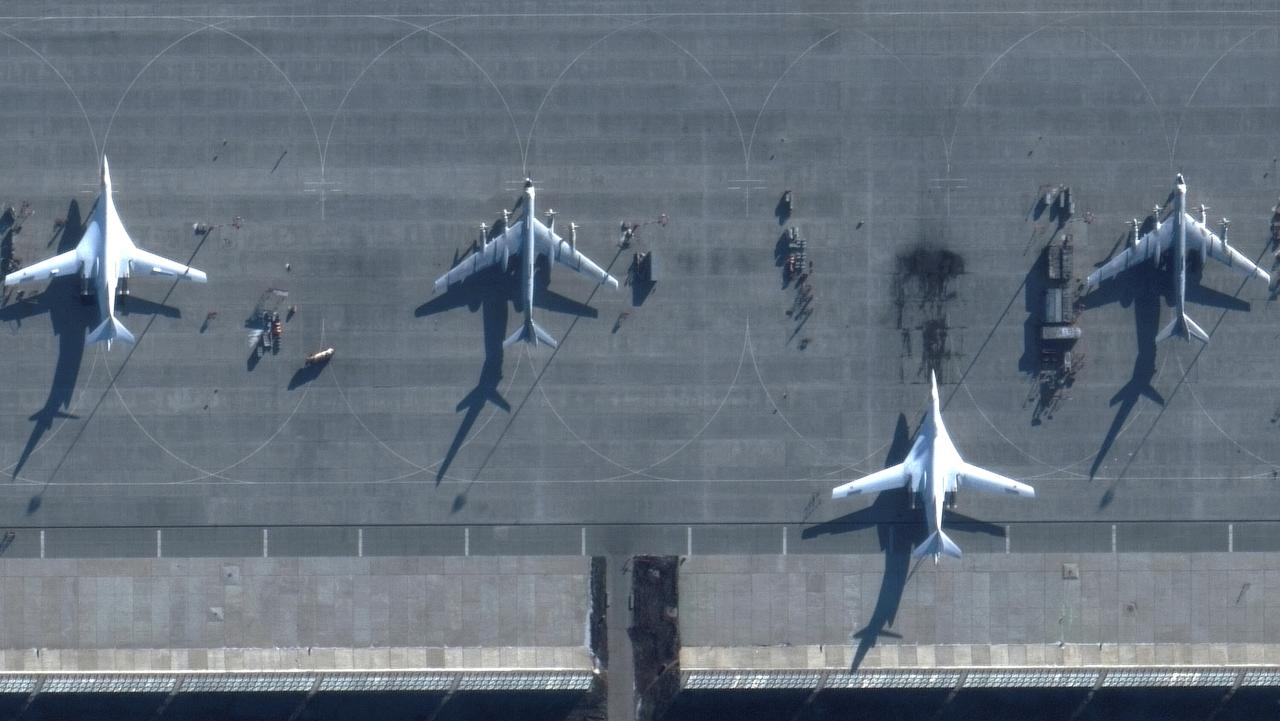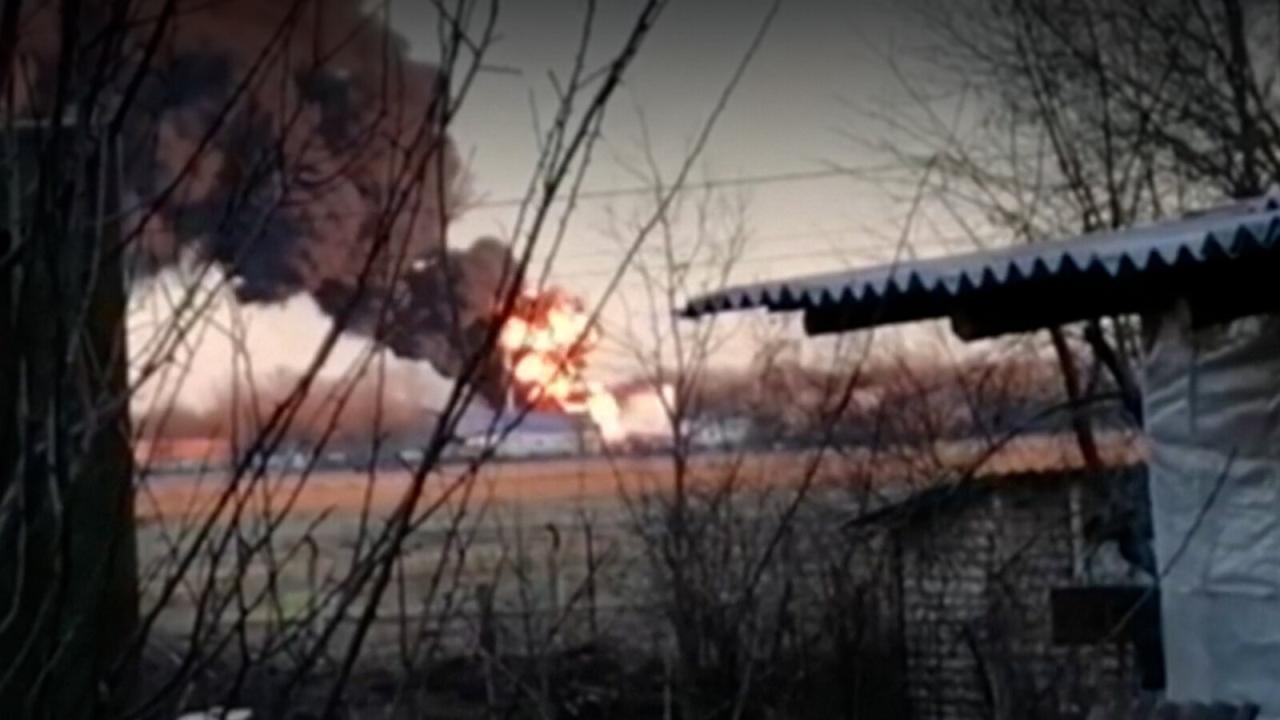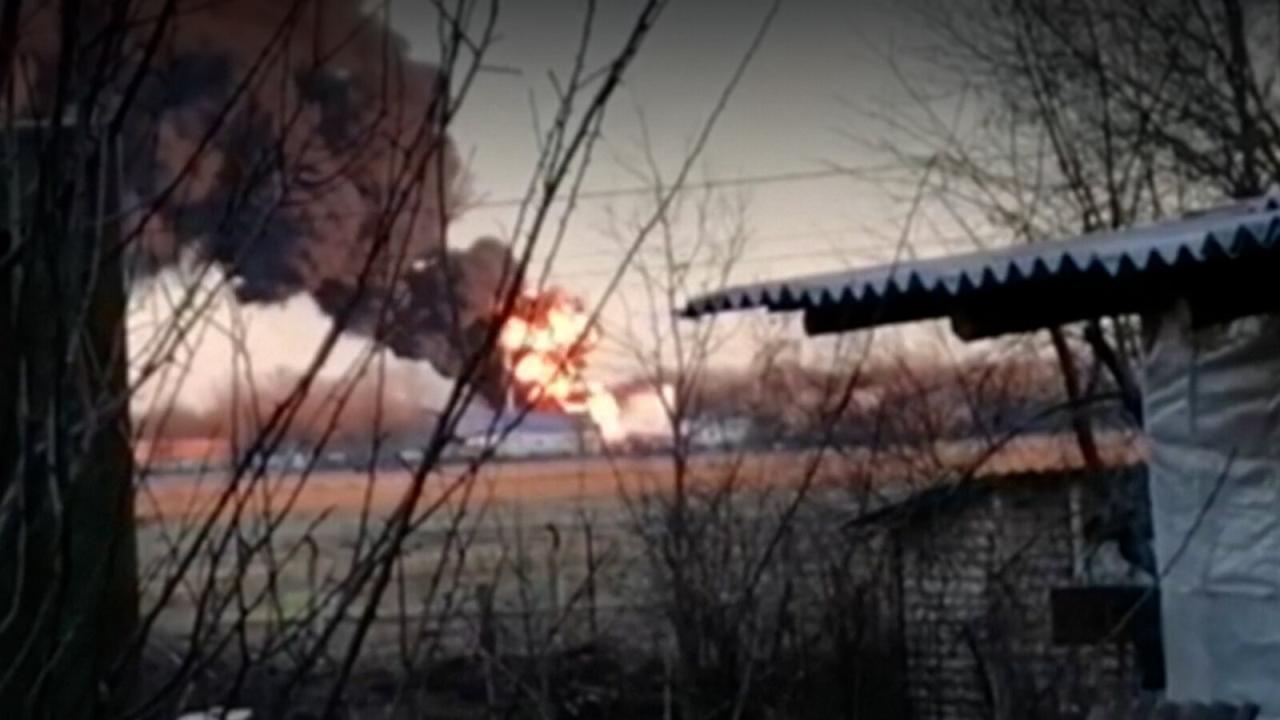Ukraine drone attack on russia – Ukraine drone attacks on Russia represent a significant escalation in the ongoing conflict, marking a shift in tactics and raising crucial questions about the future of warfare. These attacks, ranging from small-scale incursions to more ambitious operations, have targeted various locations across Russia, prompting strong reactions from the Russian government and international observers alike. This analysis delves into the frequency, methods, and implications of these drone strikes, examining the technology involved, the claimed responsibility, and the broader geopolitical consequences.
Recent drone attacks on Russian territory by Ukraine have highlighted the increasing use of unmanned aerial vehicles in modern warfare. This raises questions about drone safety regulations globally, as evidenced by a recent incident, a florida drone accident , which underscores the need for stricter protocols. Such incidents, regardless of location, emphasize the importance of responsible drone operation and highlight the potential consequences of misuse, impacting both military and civilian contexts.
The Ukrainian drone attacks, therefore, warrant a broader discussion on international drone safety standards.
The evolving nature of this conflict necessitates a thorough understanding of the drone attacks’ strategic motivations, technological advancements, and potential long-term impact on regional stability and international relations. This examination will explore the various types of drones employed, the effectiveness of Russian countermeasures, and the international community’s responses, offering a nuanced perspective on this critical aspect of the Russo-Ukrainian war.
Ukraine Drone Attacks on Russia: Ukraine Drone Attack On Russia
The increasing frequency of drone attacks targeting Russian territory from Ukraine has significantly escalated the ongoing conflict, raising concerns about regional stability and the potential for further escalation. This analysis examines various aspects of these attacks, from their geographic distribution and the types of drones employed to the international response and the evolving technological landscape of drone warfare.
Frequency and Geographic Distribution of Drone Attacks
Reports of drone attacks on Russia have increased in both frequency and geographic reach since the beginning of the full-scale invasion of Ukraine in February 2022. These attacks target various locations across Russia, including military installations, infrastructure, and even residential areas. The following table provides a summary of reported incidents, though comprehensive and verifiable data remains challenging to obtain due to the nature of the conflict and differing reporting from various sources.
| Date | Location | Claimed Target | Reported Damage |
|---|---|---|---|
| October 26, 2023 | Kursk | Oil refinery | Minor damage reported |
| September 4, 2023 | Moscow | Residential building | Minimal damage, no casualties |
| August 30, 2023 | Bryansk | Military airfield | Damage to several aircraft reported |
A map illustrating these attacks would show a concentration of incidents near the border regions of Ukraine, with some attacks extending deeper into Russian territory. Targets closer to the border often include military infrastructure, while those further inland frequently involve civilian infrastructure, highlighting the evolving nature and reach of these attacks.
Analysis of attack frequency reveals a potential upward trend, although data limitations prevent definitive conclusions. However, the observed increase suggests a possible escalation in Ukrainian tactics or a shift in capabilities.
Recent Ukrainian drone attacks on Russian territory have highlighted the increasing sophistication of unmanned aerial vehicles in modern warfare. The effectiveness of these drones is partly due to advancements in drone technology, such as those offered by companies like Sky Elements Drones, sky elements drones , which are developing cutting-edge systems. These technological developments continue to shape the evolving dynamics of the conflict in Ukraine.
Types of Drones Used in Attacks
Several types of drones are believed to have been used in the attacks, ranging from commercially available models modified for military purposes to potentially more sophisticated, purpose-built UAVs. Attribution of specific drone models is often challenging due to the lack of official confirmation and the deliberate obfuscation employed by the actors involved.
- Commercially Available Drones: Modified versions of readily available drones, leveraging their ease of acquisition and relative simplicity of operation. Limitations include shorter range and payload capacity.
- Military-Grade Drones: Potentially involving drones with enhanced capabilities, including longer range, greater payload capacity, and advanced navigation systems. These would likely require more sophisticated logistical support and operational expertise.
- Unknown/Unidentified Drones: The possibility of employing drones with unique capabilities or unknown origins further complicates the analysis.
The technological sophistication of the drones used has likely evolved over time, with a possible increase in range and payload capacity. This could indicate advancements in drone technology or access to more advanced systems.
Potential sources for the drones range from domestic Ukrainian manufacturers to international suppliers, or even captured Russian drones repurposed for attacks.
Recent drone attacks on Russia from Ukraine highlight the evolving nature of modern warfare. The sophistication of these attacks suggests advancements in drone technology, a field where companies like Sky Elements Drones, offering innovative solutions as seen on their website sky elements drones , are at the forefront of innovation. This technological arms race, fueled by conflict, continues to reshape battlefield tactics and necessitates further investigation into drone capabilities.
Claimed Responsibility and Attribution

While some attacks have been claimed by Ukrainian groups or individuals, others remain unclaimed, making definitive attribution challenging. Claims of responsibility are often made through public statements, social media posts, or leaked communications. Motivations cited generally involve disrupting Russian military operations, targeting logistical capabilities, or demonstrating Ukraine’s ability to strike deep into Russian territory.
Russian Response to Drone Attacks, Ukraine drone attack on russia

Russia’s response to the drone attacks has included increased air defenses, public statements condemning the attacks, and retaliatory actions within Ukraine. The effectiveness of these responses remains debatable, with continued drone attacks suggesting ongoing challenges in mitigating these threats. Examples include deployment of additional air defense systems near major cities and increased military patrols.
International Reaction and Implications
The international community has reacted to the drone attacks with varying degrees of concern and condemnation. The following table summarizes some of these reactions:
| Country/Organization | Statement | Date |
|---|---|---|
| United States | Expressed concern over escalation | October 27, 2023 (Example) |
| NATO | Called for de-escalation | October 28, 2023 (Example) |
| European Union | Condemned the attacks | October 29, 2023 (Example) |
The geopolitical implications include heightened tensions, increased risk of escalation, and potential for wider involvement in the conflict. The attacks also directly impact the ongoing conflict in Ukraine by disrupting Russian logistics and potentially affecting the course of military operations.
Impact and Damage Assessment

The impact of the drone attacks varies considerably depending on the target and the success of the attack. While some attacks result in significant damage to infrastructure and potential casualties, others cause minimal damage.
- Infrastructure Damage: Damage to military bases, oil refineries, airports, and other critical infrastructure has been reported.
- Human Casualties: While some attacks have resulted in casualties, the number of reported deaths and injuries remains difficult to verify independently.
The economic and social consequences include disruption to supply chains, increased security costs, and potential psychological impact on the civilian population.
Technological Aspects and Future Trends
Advancements in drone technology, such as increased range, payload capacity, autonomy, and stealth capabilities, are likely to influence future attacks. This includes the development of swarm tactics and the integration of artificial intelligence for improved targeting and navigation. Improvements in drone technology will likely necessitate further advancements in defensive measures, including more sophisticated air defense systems and electronic warfare capabilities.
In conclusion, the Ukrainian drone attacks on Russia represent a complex and evolving situation with far-reaching implications. The frequency, sophistication, and targets of these attacks highlight the changing dynamics of the conflict, underscoring the increasing role of unmanned aerial vehicles in modern warfare. The international community’s response, coupled with Russia’s countermeasures, will significantly shape the future trajectory of the conflict and potentially influence the development and deployment of drone technology globally.
Further analysis and monitoring are crucial to fully understand the long-term consequences of this new phase of the war.
Frequently Asked Questions
What is the primary goal of these drone attacks?
The primary goals are debated, but likely include disrupting Russian military operations, targeting key infrastructure, demonstrating Ukrainian capabilities, and potentially undermining Russian morale.
How effective have the Russian countermeasures been?
The effectiveness of Russian countermeasures is a subject of ongoing debate. While some attacks have been intercepted, others have successfully reached their targets, suggesting room for improvement in Russia’s defensive capabilities.
What types of damage have these attacks caused?
Damage has varied widely, ranging from minor property damage to significant destruction of infrastructure, including oil facilities and military bases. Casualties have also been reported, though the exact numbers remain contested.
What is the international community’s stance on these attacks?
Reactions have been varied. Some countries condemn the attacks, while others express concerns about escalating the conflict. Many nations avoid direct condemnation, focusing instead on calls for de-escalation.
